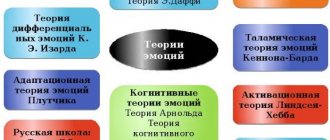There are different ways to listen to what other people say. Some prefer to perceive information in the form of dialogue or discussion. That is, they actively participate in the conversation, periodically interrupt their interlocutors, give their assessment of what they heard, or voice “counter” ideas, even if they are not asked to do so. This manner of perceiving information is often considered a sign of lack of education, a manifestation of disrespect for the interlocutor and inattention to the topic of the conversation. Meanwhile, from a psychological point of view, such a manner of communication indicates just the opposite.
In psychology, there are two types of communication manners: active perception, or reflexive, and non-reflective listening, that is, passive.
The more actively the interlocutor reacts, the more interested he is in the topic of conversation and filled with emotional sympathy. In other words, reflective listening is a sign of participation and interest. Non-reflective listening, accordingly, indicates a person’s reluctance to enter into a discussion or his indifference to the topic of the conversation.
However, this is a very generalized view. In some life situations, the absence of reflexes when communicating is a necessity, for example, in a psychotherapist’s office. When communicating with a patient, a doctor practices non-reflective perception of information. Another example of the need for this type of listening is behavior in a family or friendly conflict, when one of the parties is simply waiting for the more temperamental person to “blow off steam.” There are also special techniques that teach non-reflective listening. Accordingly, this way of perceiving information does not always indicate the alienation of the interlocutor or his lack of interest in the conversation.
What is it? Generalized definition
Every person who has at least superficially studied psychological disciplines has inevitably encountered the following task during tests or exams: “Indicate what the essence of unreflective listening is.” At first glance, there should not be any difficulties in its implementation. You should simply write or voice a definition of this type of listening.
However, everything is not as simple as it seems. There are three excellent detailed definitions of this concept. Therefore, when asked “Indicate what the essence of non-reflective listening is,” clarification or additions to this wording are required. If they are not there, then, as a rule, a superficial, generalized definition of this concept is voiced. It also gives an idea of the essence of this type of listening.
Non-reflective listening is a specific manner of perceiving information and communicating in which one person speaks and the other is silent.
Reflective Listening
Definition 1
Reflex – (translated from Latin means “reflection”) is a response of living organisms to the influence of environmental factors.
Finished works on a similar topic
Coursework Types of hearing 410 ₽ Abstract Types of hearing 280 ₽ Examination Types of hearing 190 ₽
Receive completed work or specialist advice on your educational project Find out the cost
A type of listening where, during the conversation, the reaction to the information received is in the foreground. This listening involves the perception of received information and an immediate response to it using statements or questions.
This type of listening during a conversation is considered the most constructive. At the same time, mutual understanding towards each other and openness in conversation are formed.
How else is this concept interpreted?
This type of perception of information, when considered as a natural way for a person to listen to an interlocutor, is defined as a type of dialogue, which, of course, has its own characteristics.
Non-reflective perception of information in this case is defined as a passive-active type of listening, in which a person is not distracted, delves into the essence of what is being presented, but remains silent, although he shows signs of auditory attention to the interlocutor.
In other words, the listener is interested in the topic of the conversation and supports the speaker with facial expressions, gestures, short interjections or rare leading, clarifying questions. It is this natural type of non-reflective manner of perceiving information that formed the basis of professional listening techniques used by psychotherapists.
The second definition interprets the concept of unreflective listening literally. The name comes from the Latin word reflexio, which is translated into Russian as “reflection”. Thus, unreflective perception of information is nothing more than listening without delving into the meaning of speech or analyzing what is said by the interlocutor. This type of listening is also used in professional communication techniques. It is indispensable when you have to listen to empty, meaningless chatter.
The third definition is as follows: non-reflective perception is silent listening to the information presented by a person, accompanied by the creation of conditions for the interlocutor to speak frankly, to the point. This type of listening involves encouraging the speaker, demonstrating attention, usually expressed in short remarks or interjections, in gestures and facial expressions. It is this type of unreflective perception of information that is used during heart-to-heart conversations, on first dates, or when providing friendly support.
What are the features of this type of perception?
What is special about unreflective listening? It would seem that the answer to such a question lies on the surface; it is obvious from the definition of this concept. That is, a feature of this method of perceiving information is silently listening to the speech of the interlocutor. Without a doubt, this is indeed the case, and silence during a conversation is the main, indicative feature of non-reflective perception of another person’s speech.
However, this distinctive feature is not the only or unique feature inherent in this method of listening. For example, when at a lecture, students are silent, and the teacher speaks. At first glance, there is a picture of unreflective perception of information. But this is not at all the case, since students are silent not of their own free will or in accordance with their nature and not out of caution, but because these are the rules of being in a lecture.
That is, silently listening to the speaker does not in itself determine non-reflective perception and is not its only feature. This is only one of the distinctive features of the method of receiving information we are considering.
So what is special about unreflective listening? The fact is that this way of perceiving speech is a component of dialogue, a manner of maintaining a conversation. This manner may be characteristic of a person by nature, that is, it may be an integral part of his psychotype. But it can also be acquired artificially, during training in its use. Also, a non-reflective manner of perceiving the information presented by the interlocutor may be a forced necessity.
In any case, the non-reflective type of perception of another person’s speech is the result of a voluntary choice or a combination of circumstances, emotional and psychological characteristics of the individual, but in no way a consequence of the rules. At first glance, there may seem to be a contradiction in this statement. After all, psychotherapists use precisely this manner of communication when seeing patients. Doesn't the choice of a non-reflective mode of perception then become the result of following rules? It turns out not. Psychotherapy allows for any manner of conducting a session. In other words, a specialist may well use active, effective and reflective listening. Non-reflective listening is a voluntary choice for the vast majority of specialists, since therapy methods based on it are the most effective, especially in psychoanalysis.
Situations in which non-reflective listening is useful
Since many people are more inclined to talk than to listen, you can imagine the unlimited possibilities open to unreflective listening. Indeed, some people use non-reflective listening techniques all the time. But unreflective listening is not always appropriate. However, it is difficult to determine this in advance, since everything depends mainly on the specific situation, personality, position of the speaker and listener and the purpose of their communication. The general rule is that non-reflective listening is especially useful when the other person is expressing deep feelings such as anger or grief, or is simply talking about something that requires only a minimal response. Non-reflective listening can be helpful, for example, in the following situations:
1. The interlocutor is eager to express his attitude to something or express his point of view. This is why many psychotherapists use non-reflective listening at the beginning of a conversation.
Non-reflective listening is also suitable for interviews. It is especially useful to use this technique during a job interview, when they want to learn as much as possible about the applicant. If you have to have such conversations, you can start the conversation with an open-ended question: “What do you like most about your job?” or “Why do you want to work for us?” Then, at times when it is convenient, you can use neutral cues to help the other person express themselves. Non-reflective listening is also useful for understanding a speaker's point of view or finding out what is behind a suggestion or complaint. This is especially useful in commercial negotiations, as well as in the trade and service sector when clarifying customer needs, when precise mutual understanding is required in a short dialogue. Otherwise, you can act rashly, come to false conclusions, tell people something that does not interest them, or answer questions that they do not ask.
2. The interlocutor wants to discuss pressing issues. This is exactly the case when it is recommended to use the technique of non-reflective listening. Otherwise, pent-up feelings will interfere with any attempt to establish a normal two-way conversation. When a person struggles with a problem or feels hurt, he or she experiences anxiety, fear, frustration, pain, anger, or resentment. In such cases, it is prudent, almost without interfering with the interlocutor’s speech, to give him the opportunity to speak out and express any of his feelings. Non-reflective listening is most suitable for tense situations.
3. The interlocutor has difficulty expressing his concerns and problems. In this case, non-reflective listening allows for minimal interference in the conversation, thereby facilitating the speaker's self-expression.
Participants in one experiment were asked to tape record themselves speaking on any topic. For this, payment was offered, the amount of which depended on the duration of the conversation. Some of the experiment participants spoke for 5 days in a row. Many felt better just because they had the opportunity to talk, while others had the opinion that the tape recorder was better than any interlocutor.
However, when comparing tape recordings with
recordings of interviews with real people have proven difficult to tell them apart.
In another experiment, participants were asked a semi-open-ended question like, “Are you worried about anything?” or “Are you sad about something?” If the answer was “yes,” they were invited to talk about their feelings to the recording device. As the story progressed, an inscription appeared on the board in front of the experiment participants: “Good! We listen to everything you say." A common emotional problem was feelings of sadness. Another common difficulty experienced by about half of the participants was difficulty expressing themselves.
Unnecessary interference in the conversation and subjective remarks are what close the path to mutual understanding.
4. Restraining emotions in a conversation with a person occupying a higher position. People are often hesitant to speak up to their bosses for fear of damaging relationships or jeopardizing their jobs.
As mentioned earlier, much depends on the specific situation, the personality of the speaker and listener, and the purpose of their communication. But usually people who occupy a higher position feel freer during a conversation, often interrupt the interlocutor on the merits, that is, they show a kind of power. As a result, communication becomes one-way, and people in higher positions hear only what they want to hear, and not what they need to hear. Therefore, “yes,” as one executive put it, are much more dangerous than those who constantly ask questions or object.
By understanding how superiority negatively impacts communication, everyone, whether a leader, teacher, therapist, community leader, or parent, can encourage more effective communication by using non-reflective listening techniques. These techniques show the interlocutor that they are interested in him and want to know his opinion and feelings.
Therefore, the results of one of the studies are not surprising, indicating that discipline and “morale” are higher in those teams where the leader (master) more often listens to the complaints and sorrows of his subordinates. This does not mean that such a manager pays less attention to production, no, he is simply more “worker-oriented.” Experience shows that workers in such teams achieve higher labor productivity than those whose managers are “primarily production-oriented.”
There are other situations in which unreflective listening may also be appropriate. Shy and insecure people find it easier to communicate with self-possessed and modest interlocutors. I have long discovered that students who are consistently silent in class or in group discussions are not necessarily less capable. Sometimes, on the contrary, they show exceptionally high abilities, but are more restrained than others in group conversation. Added to this is the fact that some people feel more at ease with things than with people. People who work with numbers, with technology, in laboratories or research organizations do not always communicate easily. Moreover, people who have experienced emotional crises often look for a “sounding board” rather than an adviser in their interlocutor.
In such cases, non-reflective listening, sometimes accompanied by appropriate nonverbal communication techniques such as the touch of the hand, conveys understanding and empathy better than a stream of words.
Carroll E. Izard
ANGER, DISGUST, CONTEMPT AND THEIR RELATIONS TO HOSTILITY AND AGGRESSION[55]
Anger, disgust and contempt are different fundamental emotions. There are also differences in experience. A person may feel irritated with anger, deeply displeased with disgust, and cold and distant with contempt. However, in everyday life, anger, disgust and contempt seem to occur frequently together. Situations that trigger one of these emotions often trigger the others. The first section of this chapter will examine anger, disgust, and contempt as separate fundamental emotions. The relationship of these emotions to hostility and aggression will be discussed next.
Distinctive characteristics of anger, disgust and contempt
Anger
How anger arises - its causes and activation.
A very common, although perhaps not universal, cause of anger is the feeling of being physically or psychologically blocked from doing something we really want to do. This obstacle may be physical obstacles, rules, laws, or one's own inability. If the obstacles are minor or not obvious, the immediate reaction may not be anger. However, if some barrier really prevents the achievement of a passionately desired goal, anger is bound to arise sooner or later. Low levels of anger can be suppressed for long periods of time, with known health risks and the risk of extreme anger outbursts.
Other causes of anger include personal insults, everyday frustrations, interruption of situations of interest or joy, deception, and being forced to do something against one's desire. Although the reasons listed above cause anger in many people, there are, of course, individual and developmental reasons for anger. However, some of these reasons may contribute to the emergence of emotions other than anger.
What does an angry person look like?
In Fig. Figure 2.9 shows most of the components of intense anger. In innate expressions of anger, the forehead muscles move inward and downward, creating a frowning and threatening expression in the eyes, which fixate on the object of anger. The nostrils widen and the wings of the nose rise. The lips part and are pulled back, taking a rectangular shape and exposing clenched teeth. The face often turns red. Children gradually learn to partially hide or mask the expression of anger. In Fig. Figure 3.5 shows how a sister's playful attempt to stop thumb sucking provokes an open expression of anger in a small child, and a 10-year-old boy expresses anger with tightly compressed lips that hides the baring of his teeth. Individual expressions of anger can vary greatly, but at least some of the innate natural components of anger can almost always be seen on the face of an individual in a state of anger.
How does an angry person feel?
When angry, the blood “boils”, the face burns, the muscles are tense. The person feels powerful and wants to attack the source of anger. The stronger the anger, the more powerful and energetic the individual feels, and the greater the need for physical action. In rage, the mobilization of energy is so great that a person feels that he will explode if he does not express his anger in some way.
The Bartlett-Izard study (Figure 3.6) showed that anger produces intense tension, second in intensity only to fear, and significantly higher levels of self-confidence than any other negative emotion. A sense of physical strength and confidence allows an individual to consider himself bold and courageous. We don't always associate anger with courage because in many cases, anger quickly gives way to feelings of fear or guilt about the possible consequences of anger.
In Fig. Figure 3.6 shows that the experience of anger is accompanied by a strong sense of impulsivity. The control parameter, not shown in the graph, is lower for anger than for any other emotion (although
This difference is not reliable). The combination of high impulsivity and low control helps explain why expressions of anger decrease with socialization. The combination of Muscle Tension (strength), confidence, and impulsivity may explain an individual's readiness to attack or engage in other physical activity. Anger is a relatively unpleasant feeling; the pleasure parameter with anger is lower than with fear, suffering or guilt (the differences are insignificant).
In Fig. Figure 3.7 shows a complex of emotions in an imaginary situation of anger. As can be seen from the graph, what has been called the triad of hostility: anger-disgust-contempt dominates (Izard, 1972).
Mean scores for the central emotion of anger are higher than for any other central emotion in situations of negative emotions. The dynamically related emotions of disgust and contempt, which occupy second and third places in a situation of anger, are also very strongly expressed.
Most of the emotions included in the anger complex interact harmoniously with each other and maintain a high level of clearly formed, directed activation. The most difficult thing from this point of view is to explain the presence of the emotion of suffering in the anger syndrome. As already noted, anger and suffering, according to Tomkins (1963), are activated by similar shifts in neural activity. This helps explain the presence of suffering in this complex, but not its role. One can only assume that the role of suffering is to reduce the intensity of anger and the associated emotions of disgust and contempt. If anger leads to aggression, suffering should serve as a basis for empathy for the victim, a kind of safety valve. It is also very likely that, as a result of social experience and learning, individuals may feel some distress (sadness, disappointment) in situations of anger, since anger in our society rarely leads to positive results and since it often arises from disappointment. It should be noted that in a situation of anger, fear, both in absolute values and in rank, is lower than in any other negative emotional situation. Anger suppresses fear. The possible role of fear in a situation of anger, like the role of suffering, may be a weakening influence on the potentially dangerous “triad of hostility.”
The meaning of anger. In human evolution, anger was essential for survival. It is explained by the ability to mobilize the individual’s energy and make him ready for active self-defense. With the development of civilization, the need for this function of anger has become so rare that most scientists consider it a hindrance rather than an advantage. This can be considered an example of social evolution overlapping biological evolution. Now, except in rare cases of self-defense or protection of loved ones, attacking in anger is almost always a violation of legal and ethical codes and not only causes harm to the victim, but also creates serious trouble for the aggressor.
In some cases, small, regulated anger can be a source of a certain psychological strength (self-confidence), which is necessary if you have to, for example, speak in your own defense. There is clinical and experimental evidence that shows that failure to express righteous anger appropriately can interfere with clear thinking, impair relationships, and lead to psychosomatic disorders (see, for example, Holt, 1970).
The results of the study of the causes and consequences of anger are shown in table. 3.2.
Disgust—indignation
In some respects, disgust is closely related to anger, but it has several distinct characteristics. In itself it is not as dangerous as anger.
How does disgust arise?
Things that are decayed or spoiled in a physical or psychological sense are disgusting. Some theories claim that disgust evolved from hunger and related behaviors. When
an individual encounters something disgusting, he may say: “This tastes disgusting.”
What does a disgusted person look like?
In Fig. 2.10 (p. 228) is a pretty good depiction of disgust. In extreme expressions of disgust, the person appears as if they are choking or spitting. Expressions of disgust also include pulling the upper lip upward and wrinkling the nose. This creates the impression that the eyes are squinting. A more detailed description and illustration of disgust can be found in Ekman and Freisen (1975).
How does a disgusted person feel?
The feeling of disgust is similar to the feeling of nausea and bad taste in the mouth. A person wants to eliminate the object of disgust or distance himself from it. If the disgust is very intense, it can actually cause vomiting.
As can be seen when comparing Fig. 3.7 and 3.8, the emotion profiles for anger and disgust are very similar, but there are some significant differences between them. In a situation of anger, interest is significantly higher, and suffering is slightly lower than in a situation of disgust. It can be assumed that the object of anger captures attention more strongly than the object of disgust, which should rather contribute to switching attention to something else.
Meaning of disgust.
When something disgusts us, we strive to eliminate that object or change it so that it is no longer disgusting. In the process of evolution, disgust probably helped maintain a sanitary environment and prevented the consumption of spoiled food and contaminated water. It is also possible that disgust plays a role in maintaining bodily hygiene: the smell of a dirty body and the appearance of a dirty body can be disgusting to oneself and others.
Disgust can be directed at an idea or person, including one's own. Disgust associated with anger can be very dangerous, since anger can cause an “attack”, while disgust can cause a desire to “get rid of”. Disgust, like anger, can be self-directed, lowering self-esteem and causing self-judgment. A comparison of healthy subjects and patients suffering from depression showed that the latter were characterized by self-directed anger and disgust.
The results of the study of the causes and consequences of disgust are presented in table. 3.3.
Contempt—disrespect
It is quite difficult to analyze the role of contempt in evolution and to figure out its adaptive or constructive functions in modern life. However, you should try to do it.
How does contempt arise? From an evolutionary perspective, contempt may have arisen as a means of preparing an individual or group to face a dangerous rival. For example, a young person can prepare himself for self-defense through the following thoughts: “I am stronger than him, I am better.” Such a statement can become a unifying signal for all men preparing for defense or attack. It is possible that those who were convinced of this showed more courage and less compassion for the enemy and were more successful in overcoming the dangers of hunting and fighting. Situations that evoke contempt are those in which the individual needs to feel stronger, smarter, more cultured, better in some way than the person being despised. Situations that create jealousy, greed, and competition create a breeding ground for contempt.
What does a despising person look like?
Rice. 2.11 (p. 229) depicts contempt well: the eyebrow is raised, the face is long, the head is raised, as if the person is looking down at someone. At the same time, the despising person seems to distance himself, creating a distance between himself and others.
What does a despising person feel?
As stated above, contempt is a feeling of superiority over some person, group, or thing. Contempt, like anger and disgust, is to a certain extent a feeling of hostility. A person is hostile to someone whom (or what) he despises.
The profile of emotions in a situation of contempt is shown in Fig. 3.9.
Meaning of contempt.
In evolution, contempt may have played a constructive role in the development of self-defense. However, when contempt is directed at other people (or at oneself), it is difficult to detect anything positive or adaptive in this emotion. It is possible that moderate contempt serves a constructive purpose if it is directed against those who deserve it, such as those guilty of waste, pollution, immorality, oppression, crime, or war.
—
It is easy to understand the negative functions of this emotion. Contempt is the basic emotion in all types of prejudice, including racial prejudice. Of the three emotions in the triad of hostility—anger, disgust, and contempt—contempt is the coldest emotion. Contempt is a detached experience that encourages aggression, manifested in cunning and deception. Contempt for people tries to depersonalize a certain individual, to make him perceive this person as something that does not deserve to be human. Because of these characteristics, contempt can become a motive for murder and mass destruction; people - “cold-blooded murder.” The causes and consequences of contempt are listed in table. 3.4.
Table 3.2
Causes and Effects of Anger (N—approximately 130 college students)
| Answers | Percentage of subjects who gave answers | |
| Predecessors | ||
| Feelings | ||
| 1. | Deceived, betrayed, disappointed, offended by others | 40,8 |
| 2. | Symptoms of anger-rage | 17,7 |
| 3. | Hatred, hostility, judging others, destructive thoughts | 12,0 |
| 4. | Aggressive, vindictive, desire to attack others | 8,0 |
| 5. | Feelings of failure, self-disappointment, self-judgment, inadequacy | 5,6 |
| 6. | Feeling the world is unfair | 3,2 |
| 7. | Synonyms of suffering | ,8 |
| 8. | Other feelings | 12,0 |
| Thoughts | ||
| 1. | Thoughts of hatred, rejection, judgment of others, destructive thoughts | 31,2 |
| 2. | Thoughts about deceit, betrayal, humiliation, insult from others | 19,2 |
| 3. | Thoughts of failure, self-disappointment, self-judgment, inability | 10,4 |
| 4. | Thoughts about universal injustice, about world problems | 10,4 |
| 5. | Thoughts of destruction, revenge | 14,4 |
| 6. | Annoying thoughts, thoughts that everything is bad | 8,0 |
| 7. | Other thoughts | 6,4 |
| Actions | ||
| 1. | Wrong, stupid actions | 34,4 |
| 2. | Violent, thoughtless actions | 16,8 |
| 3. | Actions that others don't like | 12,0 |
| 4. | No action | 8,8 |
| 5. Aggression, retaliation | 8,0 | |
| 6. Actions that are legally or morally wrong or dangerous | 7,2 | |
| 7. Other actions | 12,8 | |
| Consequences | ||
| Feelings | ||
| 1. Synonyms of anger | 28,8 | |
| 2. Frustration, tension, etc. | 24,2 | |
| 3. Vengeful, destructive feelings, desire to attack others | 24,2 | |
| 4. Hatred, hostility, judgment of others | 6,8 | |
| 5. Synonyms of suffering | 2,3 | |
| 6. Anger | 1,5 | |
| 7. Justice | 1,5 | |
| 8. Other feelings | 10,6 | |
| Thoughts | ||
| 1 . Thoughts of revenge, destruction, attacking others | 43,9 | |
| 2. Thoughts about ways to regain, maintain control over oneself, the situation, or about changing the situation | 13,6 | |
| 3. Hatred, hostility, judgment of others | 12,1 | |
| 4. Thoughts about expressing anger in words or actions | 7,6 | |
| 5. Negative, hostile thoughts (in general) | 7,6 | |
| 6. Thoughts about the event that caused the anger | 4,5 | |
| 7. Angry, destructive thoughts about yourself | 4,5 | |
| 8. Other thoughts | 6,1 | |
| Actions | ||
| 1 . Actions aimed at gaining or maintaining control over oneself or a situation | 35,6 | |
| 2. Verbal or physical attack on the object of anger | 24,2 | |
| 3. Actions against the object or situation that causes anger | 18,9 | |
| 4. Impulsive and irrational actions | 11,4 | |
| 5. Other actions | 9,8 |
Table 3.3
Causes and Effects of Disgust (N—approximately 130 college students)
| Answers | Percentage of subjects who gave answers | |
| Causes | ||
| Feelings | ||
| 1. “Sick of something”, fatigue | 27,7 | |
| 2. Feelings of failure, self-disappointment, anger towards yourself, incompetence | 26,8 | |
| 3. Displeasure, condemnation of the actions of others | 17,7 | |
| 4. Synonyms of disgust | 11,5 | |
| 5. Synonyms of suffering | 6,9 | |
| 6. Synonyms of anger | 3,8 | |
| 7. Synonyms of contempt | 3,1 | |
| 8. Other feelings | 4,6 | |
| Thoughts | ||
| 1 . Hatred, hostility, condemnation of the actions of others | 24,6 | |
| 2. Thoughts of failure, disappointment in yourself, anger at yourself, incompetence | 22,3 | |
| 3. Thoughts on war, politics, racism | 20,8 | |
| 4. Thoughts about smelly, unpleasant things | 14,6 | |
| 5. Dirty thoughts | 4,6 | |
| 6. Thoughts of loneliness, isolation, rejection | 3,8 | |
| 7. Other thoughts | 5,4 | |
| Actions | ||
| 1. Curses addressed to yourself | 30,8 | |
| 2. Wrong, stupid actions | 25,4 | |
| 3. Forced actions | 15,4 | |
| 4. Actions condemned by others | 12,3 | |
| 5. Actions that are legally or morally wrong or dangerous | 10,8 | |
| 6. Other actions | 5,4 | |
| Consequences | , | |
| Feelings | ||
| 1 . Physical disgust: nausea, fatigue, illness, etc. | 25,5 | |
| 2. Synonyms of disgust | 18,8 | |
| 3. Synonyms of anger | 15,0 | |
| 4. Synonyms of contempt | 14,3 | |
| 5. Feeling apathetic | 7,5 | |
| 6. | Feeling deceived, misled, or offended by others | 3,8 |
| 7. | Feelings of failure, self-condemnation, etc. | 3,8 |
| 8. | The feeling that everything is bad, terrible | 3,0 |
| 9. | Other feelings | 8,3 |
| Thoughts | ||
| 1. | Thoughts on the current situation | 30,8 |
| 2. | Thoughts about the event that caused disgust | 15,0 |
| 3. | Thoughts about others, attempts to forget, avoid the situation | 15,0 |
| 4. | Thoughts of failure, self-condemnation, etc. | 11,5 |
| 5. | Hatred, hostility, judgment of others | 10,5 |
| 6. | Thoughts on solving the problem | 9,8 |
| 7. | Synonyms of contempt | 3,0 |
| 8. | Other thoughts' | 11,3 |
| Actions | ||
| 1. | Actions to avoid the situation | 39,8 |
| 2. | Solution | 21,1 |
| 3. | Verbal or physical expression of hostility | 12,8 |
| 4. | Actions aimed at assessing relationships, trying to improve | 4,5 |
| 5. | Actions aimed at hiding your feelings | 3,0 |
| 6. | Actions causing extreme irritation | 3,0 |
| 7. | Arrogant actions | 2,3 |
| 8. | Conversations, establishing contact with friends | 2,3 |
| 9. | Other actions | 11,3 |
Table 3.4
What are the rules of technique for such listening?
Each method of communication has its own rules and techniques that can be learned.
The technique of non-reflective listening implies adherence to the following rules:
- no attempts to interfere with a person’s speech;
- non-judgmental acceptance of the information presented by the interlocutor;
- focusing on what is being said, and not on one’s own attitude towards it.
By following these “three pillars” you can easily master a non-reflective way of communication.
Empathic Listening
Definition 2
The term “empathy” (translated from English means sympathy, empathy) is a person’s ability to respond emotionally to the feelings of another person, his ability to experience these feelings within himself.
In a conversation, a person directs attention to “reading” the feelings and emotions of the speaker, and not to the meaning of the words. A person is scanned and the images behind the spoken words are perceived. There are 3 ways to show empathy:
- empathic response,
- accepting a different point of view,
- sympathetic response.
Empathic responding is used when a person, using conscious observation, experiences feelings similar to those of another person.
Accepting a different point of view occurs when a person imagines himself in the speaker’s place and “gets used to” his story.
Sympathetic response
When is this listening method appropriate? Examples of life situations
There is a fairly widespread opinion that the scope of use of non-reflective listening is psychology, all kinds of special training, and in ordinary life there is no place for this method of perceiving information. This belief is wrong. There are quite a lot of situations in which this type of listening is appropriate in everyday life.
For example, if people are friends, communicate closely and one of them develops severe stress or depression, then, as a rule, this person needs a listener, and not an adviser or critic. In other words, a person only wants to complain about the “evil boss”, “stupid wife”, talk about how bad everything is in his life, and not listen to someone’s “valuable thoughts” or “good advice”. That is, if a friend wants to pour out his soul, there is no need to try to explain to him how to get out of the current situation or show doubts about what was said, point out the advantages of the speaker’s situation. You just have to listen.
No less common is the situation when women complain to their friends about their husbands or children. In this case, the speaker’s desire is to complain itself, and not to listen to the assessments and opinions of her friends. Moreover, in such a conversation, exclusively non-reflective, passive listening and rare consoling phrases are appropriate, and only if any question is asked. If, for example, you agree with a woman who scolds her children or other family members, you may encounter her indignation, resentment, and simply lose your friend. And attempts to convince her otherwise and describe the positive qualities of those whom the woman criticizes will lead to a new round of complaints, making the conversation almost endless.
It is a mistake to believe that a professional non-reflective manner of perceiving information is the lot of only psychotherapists. Examples of unreflective listening to a person in the line of duty can be found almost everywhere. Let's say the postman brings a pension to an elderly person's house. While the necessary documents are being filled out, the pensioner says something, complains, reports on the economic situation in the country, or talks about something else. Of course, the postman is completely indifferent to this stream of chaotic information, but he is not able to force the old man to remain silent. The only option left is unreflective listening. This method of communication also works effectively in shops, bars, and hairdressers. In other words, an example of professional practical application of this option for perceiving information can be observed wherever forced communication with people takes place.
Techniques of non-reflective and reflective listening.
State budgetary institution of the Republic of Crimea
"Center for Professional Rehabilitation of Disabled People"
LESSON PLAN
In the discipline of VD. 01. “Fundamentals of business culture”
Cycle variable discipline
Lesson number: 19-20
Teacher: Chepurnaya Alena Vladimirovna
Code, name of profession: 15398 “Shoe repairman 2-3 category”
Name: VD.01. "Fundamentals of business culture"
Section, topic of the lesson: section 3 “Manifestation of individual personality characteristics in business communication”, “Ability to work with the customer”.
Type (type of lesson): practical lesson
Level of assimilation of educational information: students’ mastery of new material, assimilation of new concepts and methods of action, independent search activity, formation of a system of value orientations.
Purpose and objectives of the lesson:
— educational : organize the activities of students to consolidate the concepts of communication, stress, criticism, studying the client’s personality in accordance with temperament.
— developing: to promote the development of logical thinking, observation, the ability to correctly summarize data and draw conclusions. Use the acquired knowledge to solve practical problems.
— educational : create conditions for the development of business and professional ethics, politeness, the ability to take care of oneself, as a feature of expressing one’s feelings.
Material and technical equipment: personal computer, laptop.
Location of the lesson: training using distance technologies
Time : 2 class hours (40 minutes each).
Progress of the lesson:
I. Organizational part:
Good afternoon, dear listeners!
Today in a practical lesson you will practice your theoretical knowledge.
II. Message of the topic of the lesson and motivational moment.
The lesson will take place in several stages, you will need to pass testing and solve situational problems.
At the end of the lesson you should:
- determine at what level the skills to express one’s thoughts have been formed;
- find out how you may appear to your interlocutor in communication;
— outline areas of work to improve yourself for better interaction with clients.
— develop skills in the use of techniques and methods of communication accepted in society;
- identify how developed listening skills are.
III. Repetition of previously covered material:
2. What is stress? What determines our state of stress?
3. What are the features of professional stress?
4. What do we call criticism and what types of criticism are there?
5. Does criticism affect the performance of professional duties of a specialist?
6. How do you think about responding to client criticism?
The procedure for performing practical work
1. Read the instructions for the test “Can you listen?”
2. Complete the test tasks. Process the result.
3. Conclude whether your listening skills are good enough.
4. Learn the techniques of reflective and non-reflective listening on your own. Write them down in your notebook.
5. Read the situational problems. Identify (from a variety of perspectives) the most effective listening techniques appropriate to the situation. Write your answers in your notebook.
Equipment: “Practical work No. 4”
TEST
Can you listen?
Instructions:
You are asked to answer 10 questions. Rate the answer
points. For answer
Almost always” - 2 points;
“in most cases” – 4 points;
“sometimes” – 6 points;
“rarely” - 8 points;
Almost never” – 10 points.
1. Do you try to “curtail” the conversation in cases where the topic (or the interlocutor) is not interesting to you?
2. Do your communication partner’s manners irritate you?
3. Can another person's poor expression provoke you to be harsh or rude?
4. Do you avoid entering into a conversation with an unknown or unfamiliar person?
5. Do you have a habit of interrupting the speaker?
6. Do you pretend to listen attentively, but you yourself are thinking about something completely different?
7. Do you change your tone, voice, facial expression depending on who your interlocutor is?
8. Do you change the topic of conversation if the interlocutor touches on a topic that is unpleasant for you?
9. Do you correct a person if there are incorrectly pronounced words, names, or vulgarisms in his speech?
10. Do you have a condescending mentoring tone with a tinge of disdain and irony towards the person you are talking to?
Processing the results
Calculate the total points.
The higher the score, the more developed the listening skill. If the score is more than 62 points, then the listening ability is above the “average level.” Typically, the average listener score is 55. If the score is lower, then you should watch yourself when speaking.
The success of professional communication largely depends on the ability
listen to your interlocutor.
When listening, people, unfortunately, often do not hear each other. The ancient Greek writer and historian Plutarch noted that you need to learn to listen, and then you can benefit even from those who speak poorly.
Listening is a complex process that requires communication skills.
We can talk about effective and ineffective listening. Ineffective listening does not ensure correct understanding of the words and feelings of the interlocutor, and does not contribute to the establishment of trusting relationships between communication partners. Effective listening promotes understanding of the issue being discussed and leads to resolution with any client.
Do you know how to listen?
Techniques of non-reflective and reflective listening.
Non-reflective listening is the ability to remain silent attentively, without interfering with the interlocutor’s speech with your remarks and comments. Attentive silence involves listening using nonverbal means: nodding, facial reactions, eye contact.
Speech techniques are also used: “Yes, yes,” “Yes, I agree,” “Yes, I understand,” etc. This type of listening is useful when your interlocutor shows some feelings (for example, anger), wants to discuss an issue that concerns him, or wants to express his point of view.
Reflective listening is the process of deciphering the meaning of messages, establishing active feedback with the speaker. It allows you to eliminate obstacles and distortions in the communication process, and helps you understand the meaning and content of your interlocutor’s statements.
There are 4 main techniques for reflective listening:
1. Clarification - a direct appeal to the speaker for clarification using the phrases: “I don’t understand”, “Please clarify this”, etc. Such clarifications contribute to a better understanding of the interlocutor.
2. Reflection of feelings - special attention is paid to the listener’s reflection of the emotional state of the speaker using the phrases: “You are a little upset,” “It’s obvious that you feel that ...”, etc. By reflecting the feelings of the interlocutor, we show him that we understand his condition.
3. Paraphrasing - the speaker’s own formulation of the message to check the accuracy of perception. In this case, the phrases are used: “If I understood you correctly,” “In other words, you think...” etc. This allows you to show the narrator that he is being listened to and understood.
4. Summarizing - allows you to summarize the main ideas and feelings of the speaker. This technique is appropriate for long conversations, when ending a conversation. The phrases used are: “So, you think that...”, “To summarize what has been said...”.
However, the listener must avoid the following mistakes:
- interrupt the interlocutor,
- focus on the conversational characteristics of your communication partner,
- make hasty conclusions
- give unsolicited advice.
3. Situational tasks:
Task No. 1
A colleague, dissatisfied with the delay in wages, angrily expresses his dissatisfaction with this fact. What reflective listening techniques are rational to use here?
Problem No. 2
Ivanov I.I. came for an interview to get a job. During the interview, the range of job responsibilities that he would have to perform was not entirely clear to him. What reflective listening techniques would you use if you were him?
Task No. 3
During lunch break, a friend tells you about a painful problem. What listening techniques would you use?
Problem No. 4
At a production meeting, an initiative group of young workers chaotically explain to management the meaning of the “rationalization” work methods they propose. Put yourself in the shoes of the administration: what listening techniques would you use?
Check your answers:
Task No. 1 - reflection of feelings;
Task No. 2 – summarizing, clarifying, paraphrasing
Task No. 3 – reflection of feelings
Task No. 4 – clarification.
Under what circumstances is this method of listening necessary?
The essence of unreflective listening is the absence of active participation in the conversation. Accordingly, this method of communication is appropriate in circumstances in which reflective listening is not required.
As a rule, you just need to listen to the other person if he:
- wants to explain his attitude to something or indicate a political position, talk about religion;
- seeks to discuss acute, topical issues or family problems, conflicts at work;
- trying to complain or share joy.
In addition, non-reflective listening is also necessary at work, regardless of the person’s field of activity. For example, this type of communication is the best when it comes to conversations with managers and bosses. Listening skills are also required during negotiations. When it is important to correctly understand the goals and intentions of business partners or to predict the methods that competitors will use, the ability to perceive information non-reflexively is very useful.
Non-reflective listening
Non-reflective listening is a style of conversation in which only the minimum of words and non-verbal communication techniques required by the psychologist is used from the point of view of expediency.
Non-reflective listening is used in cases where there is a need to let the subject speak out. It is especially useful in situations where the interlocutor shows a desire to express his point of view, discuss topics that concern him, and where he experiences difficulty in expressing problems, is easily confused by the intervention of a psychologist and behaves in a rigid manner due to the difference in social status between the psychologist and the respondent.
Non-reflective listening is “the ability to remain silent attentively.” It can express approval, understanding, support, and sympathy, since a lot can be communicated with a minimum of words coupled with nonverbal communication. Often this “interview” technique is very productive, and in some cases the only one possible for effective communication and obtaining psychological information, since most people prefer to talk rather than listen. I. Atwater cites the following typical situations in which the use of non-reflective listening is especially useful:
1. The interlocutor is eager to express his attitude to something or express his point of view. And this should be encouraged at the beginning of a psychotherapeutic conversation for diagnostic purposes, during interviews, and during professional selection interviews.
2. The interlocutor wants to discuss pressing problems. It is important for him to “speak out” himself; what others say is indifferent to him. Such release is especially appropriate in tense situations, which is typical for psychotherapeutic sessions.
3. The speaker has difficulty expressing his problems. Not interfering with his speech helps his self-expression. In this case they say that “a tape recorder is better than any interlocutor.”
4. The interlocutor is emotionally constrained due to the superiority of the partner’s position. This superiority may stem from differences in social status, from a loss to a partner in some quality that is dominant for this person, accompanied by a “halo effect,” from a perceived asymmetry of function in a conversation, etc.
All these situations are associated with a person’s desire to find a listener, a kind of “resonator”, and not an adviser. However, unreflective listening is a subtle technique. It should be used carefully, as it is easy to make mistakes and “overdo it” in silence. Non-reflective listening is characterized by two more difficult moments for the researcher. Firstly, if the listener does not share the views and opinions of the speaker, but shows him interest, then he can be accused of hypocrisy, especially if the speaker was initially convinced of the commonality of their positions, mistaking understanding for agreement and sympathy, and subsequently realized his mistake. Therefore, in order not to violate the ethics of the psychologist, the researcher, as soon as he realized that his partner is misinterpreting his position, should immediately explain himself, even if this threatens the deterioration or cessation of communication. Secondly, the danger lies in the possibility of the listener adopting the position of a “sufferer” who endures all the speaker’s outpourings. For one, the conversation turns into torture, and his participation and understanding develop into hostility, while for another, this procedure gradually turns into one-sided chatter with a high probability of realizing one’s ridiculous situation with subsequent resentment.
To prevent such consequences in an uncontrolled conversation, in order to avoid the talkative interlocutor from abusing the attention of the presenter, you should optimize your non-interference. This is achieved both by minimal speech inserts and by means of non-verbal communication. The simplest neutral remarks: “yes?”, “really?”, “this is very interesting!”, “I see,” “so-so,” “a little more detail” contribute to the development of the conversation, especially at the very beginning. They stimulate and inspire the speaker, relieve tension, maintain his interest, and demonstrate the understanding and goodwill of the listener. In a word, these are incentives that ensure the maintenance of the required level of speech activity of the interlocutor. If such surrogate remarks are not enough, so-called “buffer” phrases are introduced such as: “Is anything bothering you?”, “Did something happen?”, “You look good,” “You look like a happy person,” etc. .
The arsenal of non-verbal influences during non-reflective listening is even more expanded. Here, the presenter has at his disposal both kinetic means (postures, gestures, facial expressions, eye contact), and paralinguistic (vocal additions to speech cues - intonation, volume, timbral play), and extralinguistic (non-vocal additions to speech: speech rate, placement of logical stresses and pauses, sound inclusions in speech such as coughing, chuckles and laughter, sobs, groans, crying, etc.).
Finally, we cannot neglect the possibilities of proxemic means of communication, i.e. spatiotemporal indicators of the communication process. A well-chosen distance between interlocutors promotes conversation, while excessive proximity or distance from each other hinders its development. Face-to-face and half-turn positions are also significant. Talking while standing or sitting can produce different results. It is unlikely that the conversation will be productive if for a long time one partner sits and the other stands, one is located higher, the other lower. The purpose of the conversation and the situation can determine its optimal duration and the need for breaks. The nature of the conversation and its results can be strongly influenced by such spatio-temporal parameters as cramped or spacious, rushed or leisurely, the presence of furniture separating the interlocutors, the comfort or inconvenience of the environment, lateness or accuracy, etc.
A guided conversation involves more active verbal intervention by the researcher in the process of communication with the respondent. And then they resort to reflective listening. In addition to the functions of non-reflective listening, it also performs the function of monitoring the accuracy of perception of what is heard. The need for such control may arise for various reasons.
One of them is the polysemy of words. It is necessary to clarify in what meaning the speaker used this or that word. This category also includes the frequent discrepancy between the meaning of a word and the meaning put into it by the speaker or listener. Another reason lies in the “encoded” nature of many messages. This encryption may be due to a reluctance to offend or a desire to hide true motives, a desire to play a joke, etc. But the meaning put into these allegories by the speaker is not always captured by the listener. To understand it or dispel doubts, clarification is required. A striking example of such situations is the misunderstanding of witticisms by a person without a sense of humor.
Another reason is the difficulties of open self-expression caused by certain conventions and traditions. In most social groups, it is not customary to “pour out your soul” in public, especially in an unfamiliar environment. Psychologists have noticed that during interviews, people usually begin their presentation with a short introduction that does not reflect their main concerns, from which their true intentions are not clear. Talking about the weather is a common way to avoid long-winded communication and frank conversation.
No less problematic for the effectiveness of a conversation are personal barriers to communication: shyness, timidity, depression, inability to express one’s thoughts, defects in diction, etc. The less self-confidence, the longer a person beats around the bush in a conversation before moving on to the main thing.
Is it possible to combine different types of listening?
So, we have already figured out a little about what non-reflective listening consists of. In practice, it all comes down to the silent perception of the interlocutor’s words, which means that it may well become a kind of “introductory stage” for any conversation.
Non-reflective communication is rarely used as the only type of listening to the interlocutor. Typically, this happens when active forms of listening are inappropriate. For example, if one of the interlocutors wants to speak out or is too depressed or, conversely, excited, an active manner of communication is unnecessary, you just need to listen. Also, you should not move from a non-reflective manner of perceiving information to an active one when there is a likelihood of a conflict developing, for example, in the event of an impending family scandal.
In other cases, unreflective listening may well act as a prelude to active participation in the conversation. Moreover, a combination of reflexive and passive manners of perceiving information is usually used when conducting discussions, scientific disputes, or when discussing any issues that are relevant to people communicating with each other.
What is the technique of execution?
The essence of the technique of a non-reflective manner of listening to an interlocutor is the ability to remain silent, not interrupt and not voice a personal attitude to what is being said.
The technique of this method of perceiving information can be presented in the form of a list of alternating types of reactions:
- willingness to listen;
- empathy expressed by facial expressions, posture, gestures;
- encouragement, demonstration of attention, manifested in short phrases, interjections and other options for participation (for example, you can pour tea for your interlocutor).
The conversation ends with the person who initiated and actively participated in it.
What is meant by technical techniques?
The technique of non-reflective listening is a component of the technique of this style of communication. These include:
- facial expressions;
- body postures;
- gesturing;
- short remarks and interjections;
- actions expressing interest and participation;
- leading questions that fill pauses and provoke the narrator to continue speaking.
Since the listening person is silent most of the time of the conversation, the interlocutor is guided by his body posture, gaze, facial expression, etc. Therefore, it is extremely important not only to learn not to interrupt the narrator and not to make judgments about what is heard, but also to control the postures, gestures and facial expressions adopted.











